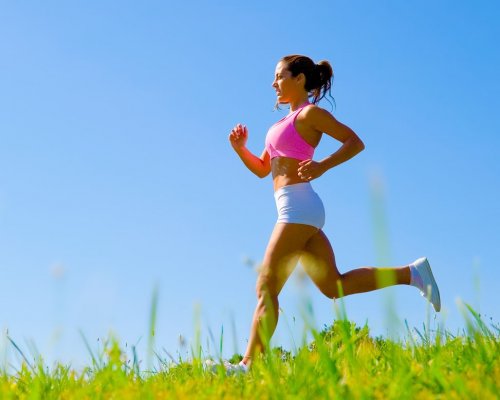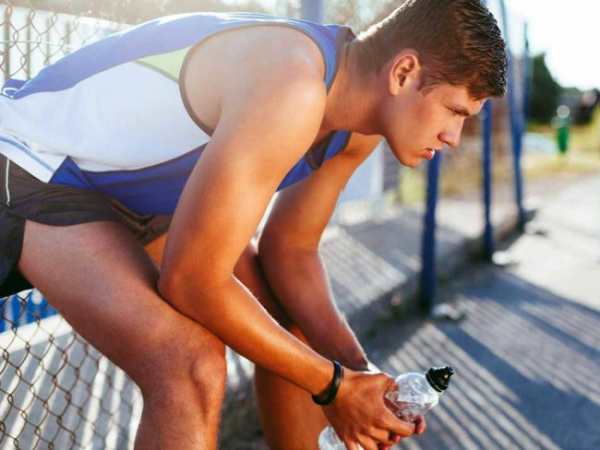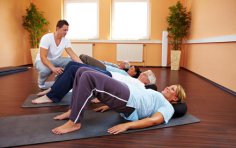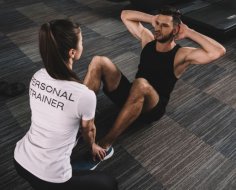
Physical fitness is the path to happiness. It means health, productivity, and a sense of fulfillment.
Where to train?
Most often these days, people choose specialized gyms for training. Good gyms have doctors, trainers, and equipment. It's very convenient. But the more expensive the gym, the more “champion-like” the trainer/instructor. They inevitably train “champions.” It's important not to neglect your health.
You can also train both at home and outdoors. It all depends on your available resources in terms of free time, money, and space. You also need to consider the suitability of the training location. For example, running along a busy highway is not the most direct route. Eating donuts and lying on the couch will be much more beneficial.
Breathing and vascular training
The most beneficial training is for the respiratory and cardiovascular systems. The simplest option is a walk on gently rolling terrain. It combines pleasure with benefit. Walking on level paths produces no effect, although it can cause fatigue.
The exact opposite is “riding” at home (or at the gym) on exercise bikes or various walking simulators. However, jumping on a treadmill can injure your joints. This is only suitable for those who have been running constantly since childhood and have “hardened” joints, especially the knees. It's best not to start after 25-30. You might end up having to see a surgeon.
Strength and speed training
Strength and speed development in physical education should be limited to the vital limits. There's absolutely no point in chasing athletic results like “faster, higher, stronger.”
Strength development is best achieved through complex exercises. However, it's also possible to limit yourself to developing the so-called core muscles. These include the core muscles: the back, abdominals, and pelvic floor muscles. Women can easily limit themselves to training these muscles. Men, however, are advised to also train the muscles of the extremities.
Endurance training
We need it much more than strength. It's endurance that allows us to enjoy a walk in the forest, as well as work in an office or factory. Endurance provides a large part of our happiness. Endurance training is directly linked to cardiovascular training. No endurance is possible without a healthy and strong heart.
What should you consider at the very beginning?
First, you should assess your health by consulting with your doctor. It's important to consider (and evaluate) the condition of all body systems, not just your heart. For example, endocrine disorders can interfere with certain activities.
After that, we need to understand what we want to achieve. A mild health benefit can be achieved through cardiovascular training and some endurance. That is, light daily “walks” on a stationary bike in a ventilated room are sufficient. But if we lack the strength to get on the bus and are late for work… then we need to develop strength as well.
Once you've determined your goals, you need to develop a training schedule . While it's best to do this with an instructor, you can also try to get by without one. The key is to remember that cardiovascular and respiratory training requires daily sessions, while strength training requires three sessions per week.
It's also important to plan your workouts gradually and progressively. It's best to prepare your cardiovascular and respiratory systems first. Then move on to developing endurance. Strength training can be postponed or omitted altogether, as the minimum required fitness level will be achieved regardless.
Duration and magnitude of loads
During your workouts, you should regularly monitor your progress. Exercise bikes, for example, have special devices that track your heart rate. These devices can be used to create a personalized training program.
However, you can also monitor your pulse. It's important to measure your pulse before exercising. It's also advisable to check your blood pressure. Those with sugar issues should also remember to use blood sugar monitoring devices.
After performing simple exercises such as a few squats (if physically possible; for some, just a few steps up a flight of stairs may be sufficient), re-measure all readings. If they show little change, you can move on to the exercises described in the published literature. Otherwise, begin training with light walking. Particular caution should be exercised if you are overweight.
While doing the exercises, listen to your heart; is it racing? A heart rate increase of up to 1.5 times is acceptable. Avoid any pain (muscle pain the next day is possible), dizziness, or blurred vision. It's a good idea to keep a mirror on the wall. Monitor your complexion in good lighting. A slight flush is normal at the end of the workout. Redness or paleness are absolutely unacceptable. In all of these cases, stop exercising immediately. Consult your doctor again before resuming.
Result
Enjoyment of exercise is one of the main conditions of physical education. A hundred years ago, people talked about muscular “joy.” This very joy is the main result of our exercises.
After the workout, your heart rate may be slightly elevated, but your blood pressure and body temperature should remain normal. Your body should feel warm and slightly tired. There should be no pain, muscle cramping, or trembling. Your breathing should be even and calm. If it is not, you should adjust your workout routine.
Muscle soreness after strength and speed training may not appear until the following day. Massage, sauna, and warm-up exercises in a well-ventilated area can help relieve this.
Data (heart rate, etc.) should be recorded in a training log. The intensity of the workout should also be reflected there. Over time, a slower heart rate and an increase in the intensity of the workout will indicate progress.
If loved ones notice changes in mood in any direction (euphoria, depression), then it is necessary to ease the training regimen or stop it altogether and get checked by a doctor.
This applies to absolutely everyone, even those who consider themselves strong and perfectly healthy. The stronger and more resilient a person is, the easier it is to push their limits. When pushing exercise to the athletic limit, it's important to remember that the athlete's body is being subjected to extreme stress. For example, body temperature and blood pressure increase significantly. Therefore, athletes always train under strict medical supervision.
Conclusion
After preparing and planning your classes, you can use the wealth of literature that describes certain sets of exercises.
Have a pleasant experience in the joy of being!






